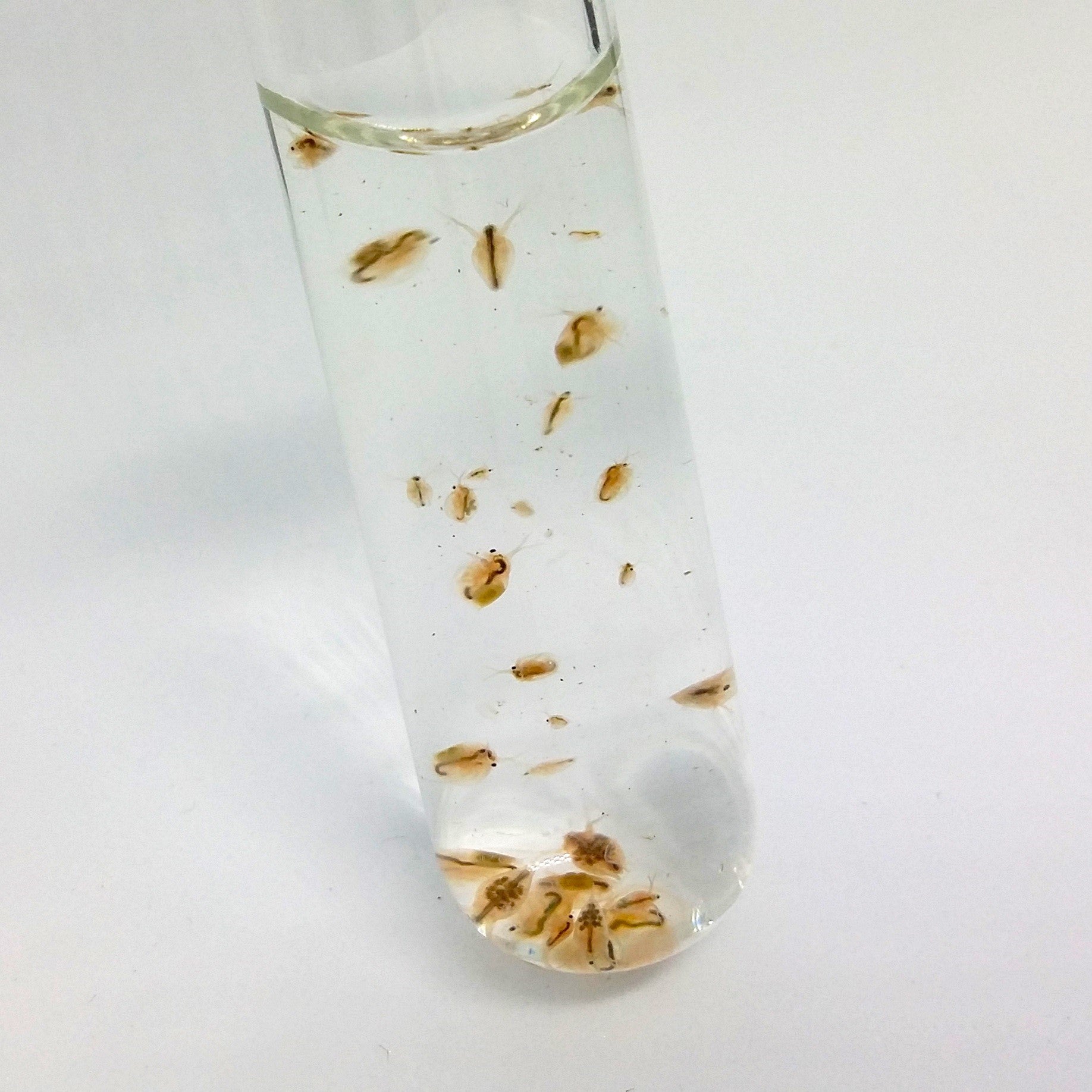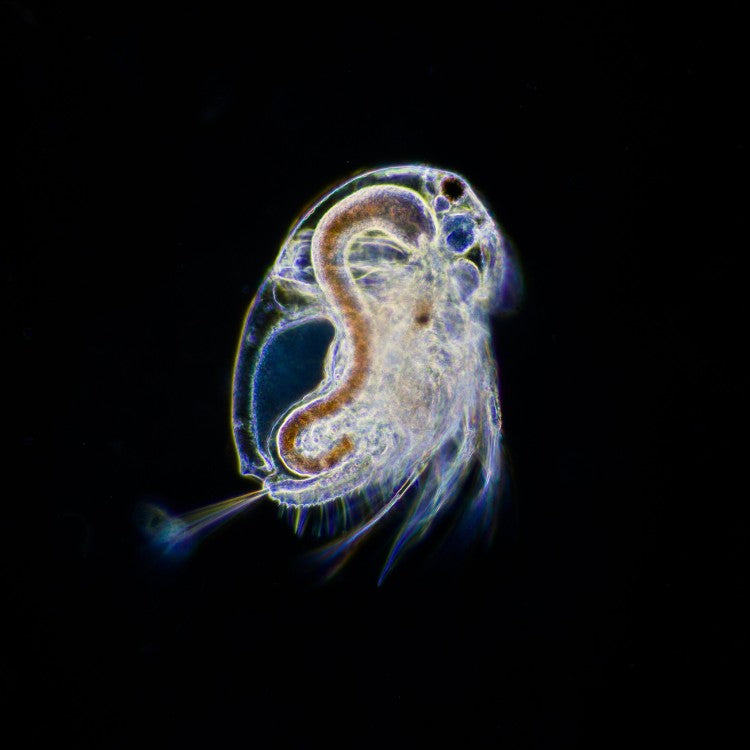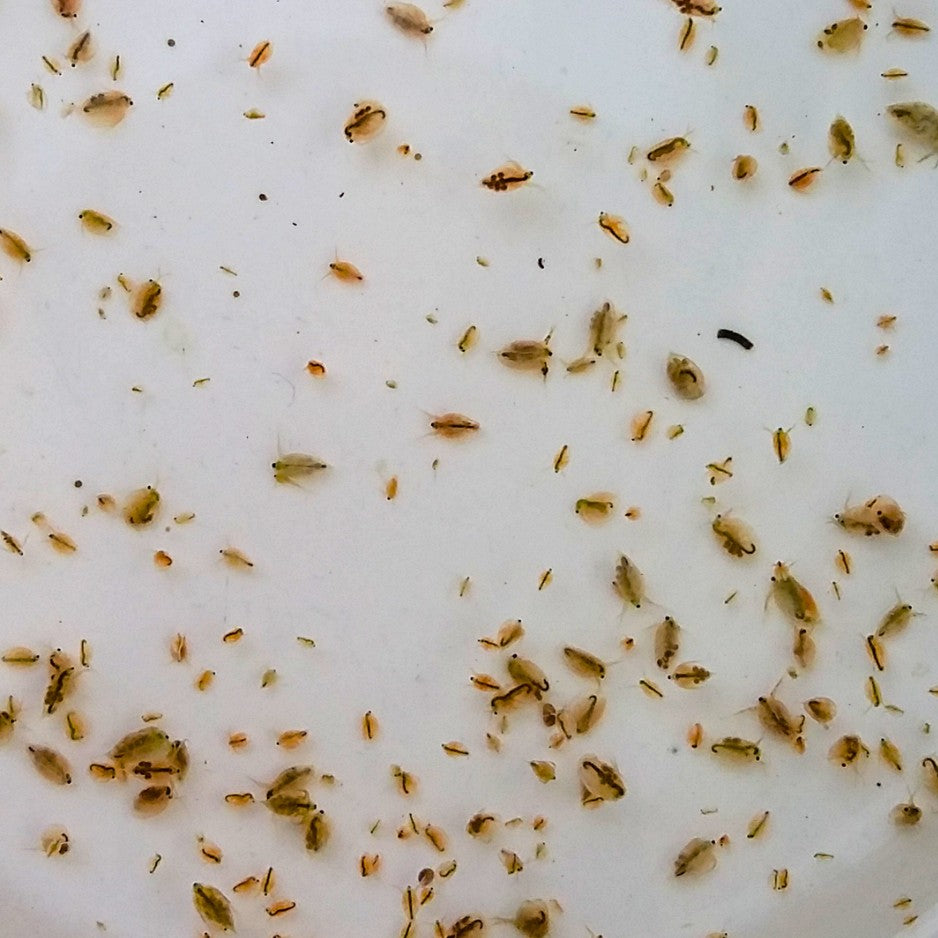Daphnia
Daphnia
Unable to load pickup service availability
PROMOTION
(strain of 100 individuals)
Small "water flea", the daphnia is essential to all freshwater ecosystems. It is also the main aquatic prey of our fish in the wild. No serious ecological cycle can do without it.
The daphnia, sometimes called "water fleas", are tiny crustaceans related to shrimp.
Measuring from 0.1 to 3 mm depending on age and species, these freshwater critters swim by hopping and spend their time filtering the water to find their food.
This is how 100 daphnia filter 5 liters of water per day on their own!
"They feed on microscopic algae, bacteria, tiny infusoria, or even simply small organic fragments in suspension. They are therefore very valuable in combating green or white water, which they clarify in a few days."
Under normal circumstances, daphnia are all female and reproduce by parthenogenesis, always producing females. Sexual reproduction is rare and only occurs in cases of stress or risk of colony extinction. Just a few individuals in spring can lead to millions of daphnia by the end of the season!
The daphnia is the main element of the zooplankton that our fish feed on in the wild, since their earliest childhood.
The daphnia are comparable in size to artemia nauplii, but have the advantage of not being salty. They are the quintessential freshwater prey. Their protein content is high: nearly 60%. And their incessant movements drive your fish crazy, as they chase them frantically!
In the absence of fish, the daphnia readily settle and reproduce according to the available food. If they disappear, they often leave behind almost invisible eggs. Therefore, it is necessary to keep the water, and they will reappear, as if by magic, when conditions allow it again.
Daphnia are very easy to raise in a simple bucket of water, or even less! To raise them yourself, turn to the Zollabox Poisson M (complete breeding kit for daphnia).
"Otherwise, you can simply feed them with a little green water and your strain will last almost forever. Their very frequent molts provide food for all the other species of critters, including the snails that love them. In short, no freshwater ecosystem can do without daphnia, and no fish should be deprived of them!"
Each strain of daphnia consists of about a hundred individuals, of all sizes and several species (two to three), to increase your biodiversity and chances of success.
Indicative weight: 40g
Share
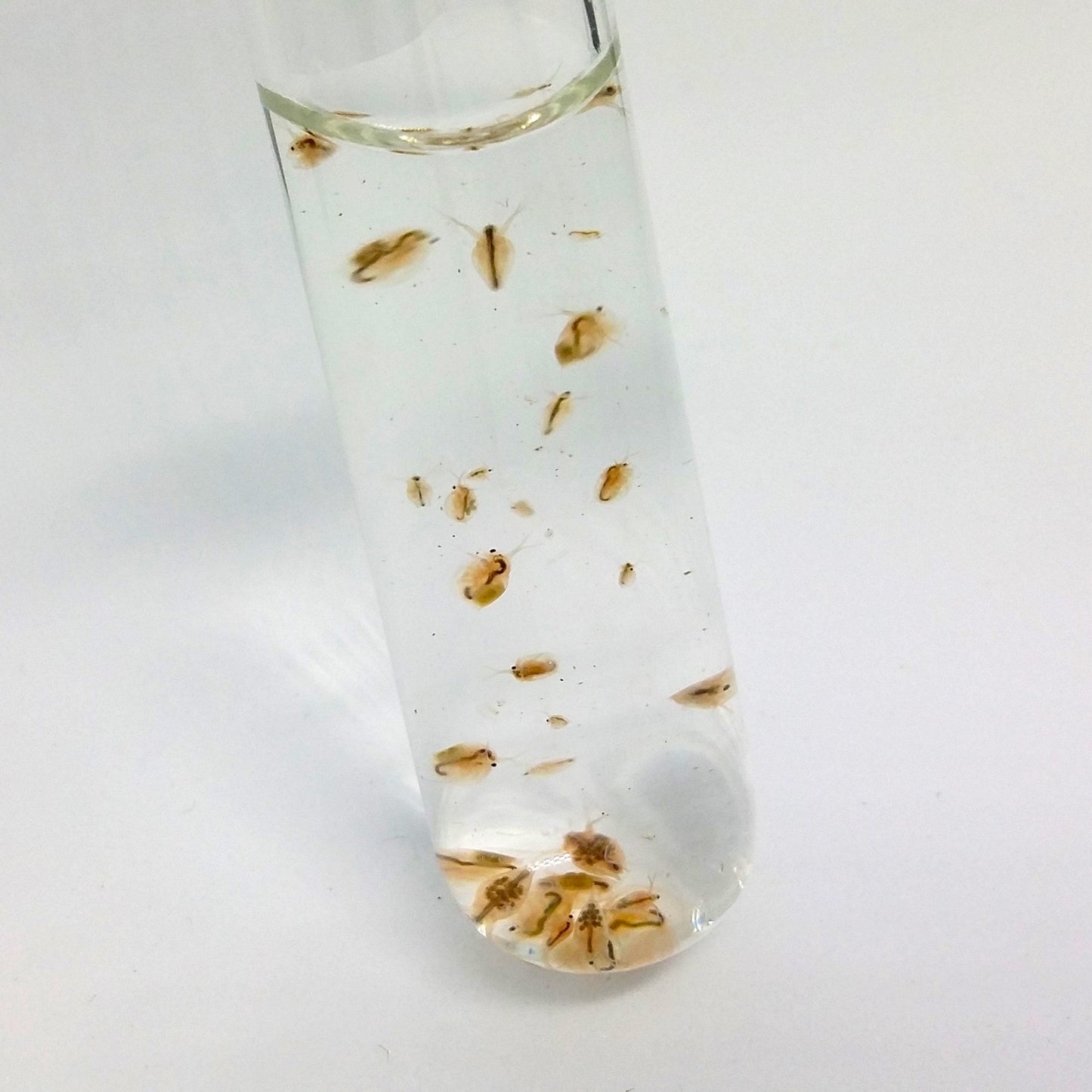
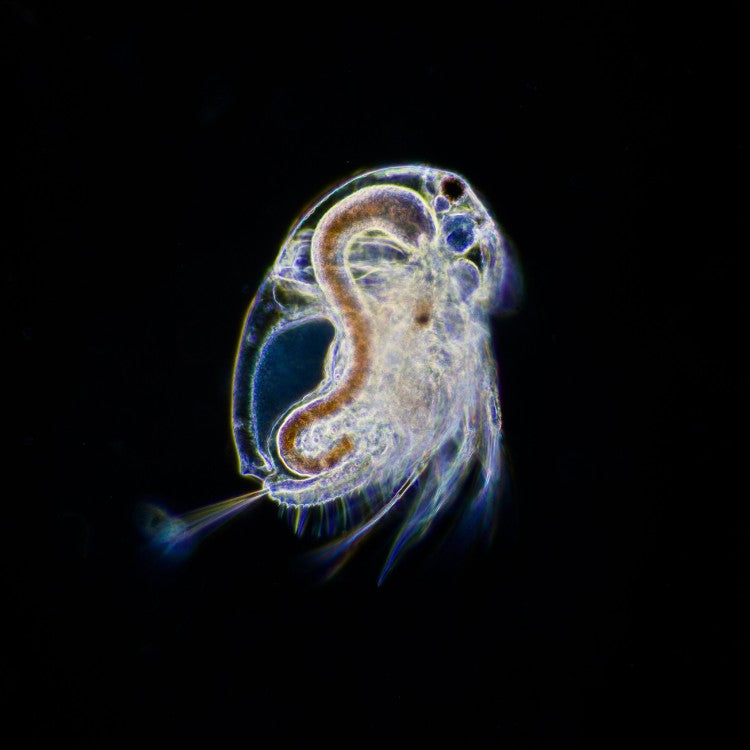
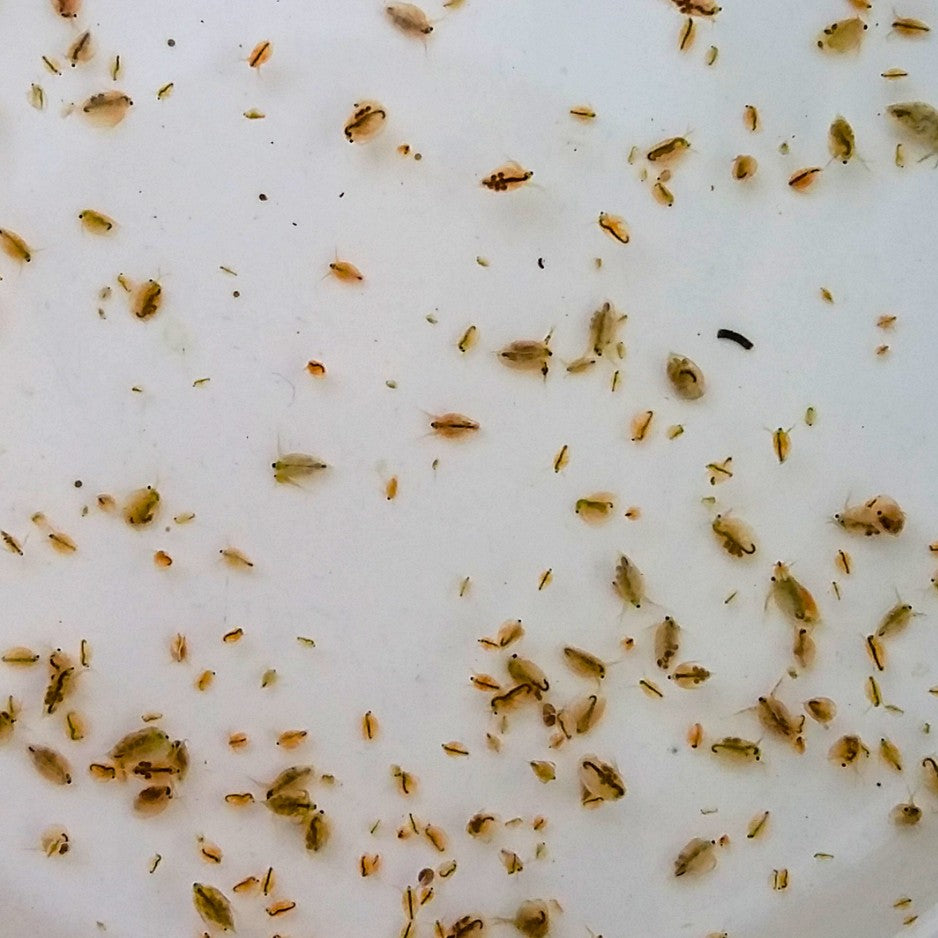
-

Sécurité des envois
Vos articles vivants sont expédiés du lundi au mercredi midi pour éviter tout blocage le week-end.
L'acheminement s'effectue dans un délai indicatif de 48H.
Pour la France, un mode de livraison Express est disponible pour un envoi jusqu'au jeudi midi. -

Producteur 100% français
Nous sommes producteurs et éleveurs de plantes et d’invertébrés
aquatiques, dont nous sélectionnons et testons nous-mêmes les
espèces les mieux adaptées à l’aquariophilie naturelle ou low-tech.
Nous les conditionnons à la main pour chaque commande juste avant son envoi : la fraîcheur est donc maximale. -

À votre service
Pas de robots chez Aquazolla !
Nous répondons à vos questions par mail et nous efforçons de nous adapter à vos besoins particuliers : congés, dates d'envoi, conseils, etc.
